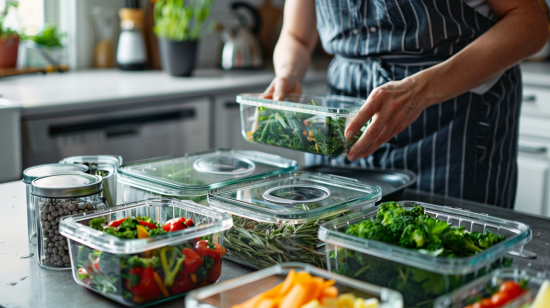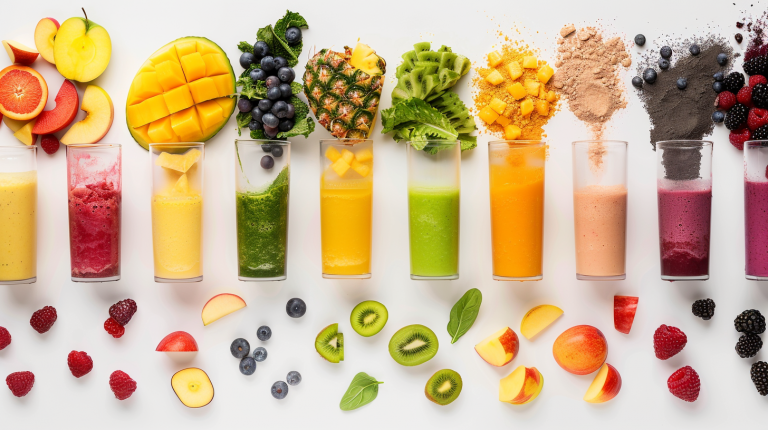Homemade Tepache: Brew Your Own Tepache At Home
Let’s dive into the bubbly and tasty world of Tepache, a traditional Mexican drink that’s not only packed with flavor but also super easy to whip up at home. Since I first tried De La Calle’s Tepache at Whole Foods last year, I’ve been hooked on sampling all the different flavors and variations out there. Today, I ventured into the process of creating my own Tepache for the very first time. The experience was not only intriguing but also left my kitchen filled with the sweet, tropical scent of pineapple and spices.
As Cinco de Mayo is a few day away at the time of writing this, what better way to dive into the festivities than by exploring this ancient beverage that marries the zesty punch of pineapple with the subtle, earthy sweetness of piloncillo sugar? Tepache, with its roots deep in pre-Columbian history, offers a perfect base for innovative mocktails or a refreshing drink to enjoy on its own.
In this post, I’ll share my firsthand experience of brewing Tepache, along with a simple guide that you can follow to make your own. Whether you’re looking for a non-alcoholic drink option for your Cinco de Mayo party or just curious about traditional Mexican ferments, Tepache might just be the vibrant, healthful addition you’re looking for. Join me as we delve into the history, benefits, and joy of making Tepache at home—just in time to celebrate a truly flavorful Cinco de Mayo.
What is Tepache?
Tepache is a lightly fermented beverage made from the peel and the rind of pineapples, and is sweetened with piloncillo—a raw form of pure cane sugar, common in Mexico—or brown sugar. This concoction is seasoned with cinnamon and sometimes cloves, which adds a warm, spicy undertone. The drink’s fermentation period can last anywhere from three days to a week, depending on your taste preferences and the climate in your area. Traditionally, it’s a rustic drink, made from ingredients that might otherwise be discarded, reflecting its origins in sustainability and resourcefulness.
The History of Tepache
Tepache dates back to pre-Columbian times when it was originally made by the indigenous people of Mexico from corn. Over time, the recipe evolved with the introduction of pineapples by the Spanish. It became a popular street beverage due to its refreshing qualities and ease of preparation. In many Mexican towns, Tepache is still sold by street vendors who ferment it to just the right level of sweetness and effervescence, serving it chilled with a festive sprinkle of chili powder.
Benefits of Fermented Beverages
Fermented beverages like Tepache are not just delicious—they’re also packed with probiotics, which are beneficial for gut health. The fermentation process encourages the growth of beneficial bacteria, which can help balance the gut microbiome and improve digestion. Furthermore, Tepache contains enzymes from pineapples such as bromelain, which has anti-inflammatory properties. This makes Tepache a great choice for a health-conscious diet, providing a tasty way to enjoy the benefits of fermentation.

How to Make Tepache at Home
Making Tepache at home is a simple and rewarding process. Here’s how I did it:
- Ingredients:
- 1 whole pineapple (the peel and rind)
- 1 cup of piloncillo (or brown sugar)
- 8 cups of water
- 1-2 cinnamon sticks
- Optional: 2-3 cloves, star anise, and ginger for additional flavoring
- Preparation:
- Start by washing the pineapple thoroughly to remove any dirt or impurities.
- Cut the peel from the pineapple, ensuring to keep a good amount of fruit on the peel. The rind and fruit scraps will be the base of your Tepache.
- In a large, clean jar, combine the pineapple peels, sugar, and spices.
- Add water and stir, ensuring that the ingredients are fully submerged.
- Tip: You can use a folded piece of aluminum foil placed inside the top of the jar to keep all the pieces of fruit submerged.
- Cover the jar with a cloth and secure it with a rubber band. This allows the mixture to breathe and release gases during the fermentation process.
- Fermentation:
- Allow the mixture to sit at room temperature for about 2 to 5 days. Check the taste daily; when it reaches your preferred level of sweetness and effervescence, it’s ready.
- Strain the liquid to remove solids and refrigerate the Tepache until cold.

Spicing Up Your Tepache: Adding Heat with Peppers
Tepache is renowned for its versatility, allowing for numerous twists and personal touches, including adding a spicy kick. Integrating hot peppers, such as habanero, into your Tepache can elevate this already refreshing drink to new levels of flavor complexity and excitement. Tread lightly because in my experience, the heat from peppers can intensify more than anticipated in beverages.
Why Add Peppers to Tepache?
- Enhanced Flavor Profile: The heat from the peppers contrasts beautifully with the natural sweetness of the pineapple and sugar, creating a unique flavor profile that is both invigorating and enjoyable.
- Health Benefits: Capsaicin, the compound that gives hot peppers their heat, has health benefits including boosting metabolism and reducing inflammation.
- Cultural Tradition: Adding a bit of spice is a nod to many traditional Mexican dishes and drinks that aren’t shy about incorporating heat.
How to Incorporate Peppers into Tepache:
- Choose Your Pepper: Depending on your heat tolerance, choose a pepper that suits your palate. Habanero offers a high level of heat with a fruity note that complements pineapple well. For less heat, jalapeño or serrano peppers are excellent choices.
- Preparation:
- Slice or Halve the Pepper: For a more intense heat, slice the pepper to increase the surface area exposed to the Tepache mixture. For a subtler flavor, add the whole or halved pepper without slicing.
- Seeding: Removing the seeds and membranes can also decrease the heat level if desired.
- Add to the Fermenting Tepache: Introduce the prepared peppers to the Tepache mixture at the start of fermentation. This allows the flavors to meld beautifully as the drink ferments.
- Taste Regularly: Since the heat can intensify over time, it’s wise to taste your Tepache regularly during the fermentation process to ensure it reaches your desired level of spiciness.
- Strain Thoroughly: Once the Tepache has achieved the perfect balance of sweetness, tang, and heat, strain out the peppers and other solids to stop the intensification of the spicy flavors.
Serving Suggestions:
- Balance with Garnishes: When serving your spicy Tepache, garnish with slices of cooling fruits like cucumber or mango, or a sprig of mint to balance the heat.
- Cocktail Creations: Use your spicy Tepache as a base for creative mocktails or cocktails that benefit from a bit of kick.
Serving Tepache as a Mocktail

Tepache is incredibly versatile in its use. Here are some ideas to elevate it into a celebratory mocktail:
- Classic Tepache Mocktail: Serve chilled with a rim of Tajín (a popular Mexican seasoning powder) and a slice of lime or orange for a tangy twist. YUM!
- Tepache Spritzer: Mix Tepache with sparkling water for a fizzy, refreshing drink.
- Tropical Tepache Blend: Combine with coconut water and mint for a refreshing tropical drink.
Here are a few ideas for more elaborate mocktails:

Tepache Citrus Cooler
Ingredients:
- Homemade Tepache
- Fresh lime juice
- Orange juice
- Ice cubes
- Sliced oranges and limes for garnish
Preparation:
- In a glass, combine equal parts Tepache and orange juice.
- Add a generous squeeze of fresh lime juice.
- Fill the glass with ice and stir well to chill.
- Garnish with slices of orange and lime.
- Serve immediately for a refreshing and tangy beverage that’s perfect for a hot day.
Spicy Tepache Mojito
Ingredients:
- Spicy Tepache (infused with habanero)
- Fresh mint leaves
- Lime wedges
- Simple syrup or agave syrup
- Sparkling water
- Ice cubes
Preparation:
- In a sturdy glass, muddle a few mint leaves and lime wedges with a tablespoon of simple syrup to release their flavors.
- Fill the glass with ice.
- Pour the spicy Tepache over the ice, filling about half the glass.
- Top off with sparkling water and stir gently to combine.
- Garnish with a sprig of mint and a slice of lime.
- Enjoy a zesty, spicy twist on the classic mojito, perfect for sipping on a festive occasion.

Pineapple-Habanero Tepache Sangria
Ingredients:
- Spicy Tepache (infused with habanero)
- Chopped fresh pineapple
- Sliced oranges and lemons
- A splash of orange liqueur (optional, for those who don’t mind a bit of alcohol)
- Ice cubes
Preparation:
- In a large pitcher, combine the spicy Tepache with chopped pineapple, slices of orange, and lemon.
- If using, add a small splash of orange liqueur for extra depth.
- Refrigerate for at least 2 hours, allowing the flavors to meld.
- Serve over ice in tall glasses, ensuring some fruit pieces make it into each glass.
- This sangria alternative offers a complex flavor profile with a spicy, tropical twist, making it a standout at any gathering.
Tepache Cucumber Chill
Ingredients:
- Tepache
- Fresh cucumber juice
- Lime juice
- Honey or agave syrup
- Mint leaves
- Ice cubes
Preparation:
- In a blender, combine a few slices of cucumber with a splash of water and blend until smooth.
- Strain the cucumber juice to remove solids.
- In a glass, mix equal parts Tepache and cucumber juice.
- Add lime juice and honey to taste, then stir well.
- Fill the glass with ice and garnish with fresh mint leaves.
- This cooling drink is ideal for relaxation on a warm day, offering a refreshing and hydrating experience.

Celebrating Cinco de Mayo with Tepache
This Cinco de Mayo, introduce your friends and family to the rich flavors of Tepache. Whether as a standalone drink or part of a larger feast featuring tacos, guacamole, and other Mexican favorites, Tepache adds a unique and festive touch. Cheers to a festive and flavorful celebration!




